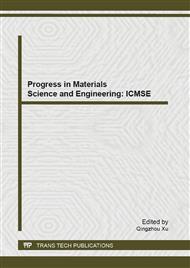p.535
p.540
p.547
p.552
p.558
p.567
p.574
p.579
p.584
The Mechanical Properties for the Attenuation of Shock Wave Interaction with Watery Foam Material
Abstract:
For understanding the dynamic behavior of watery cellular foam subject to a shock wave, this paper through experiments, to gain a deeper understanding of the incidence, reflection and transmission of a shock wave when it interacted with watery foam. Moreover, by analyzing the loss of the peak overpressure and positive impulse, we were able to respectively know the positive impulse of the incidence, reflection and transmission shock wave. The experimental results indicated that the attenuation capability for watery foam to the shock wave was caused by the internal friction and the water atomization, which would absorb the energy of the shock wave. Therein, the higher percentage of water in the cellular foam, the more obvious attenuation phenomenon for the shock wave was presented. However, the mechanical processes of cellular foam with different water percentages subject to the shock wave were not completely consistent.
Info:
Periodical:
Pages:
558-566
Citation:
Online since:
October 2013
Price:
Сopyright:
© 2013 Trans Tech Publications Ltd. All Rights Reserved
Share:
Citation:


